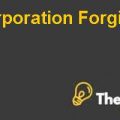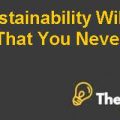Introduction to the company:
Magic Timber and Steel was established in late 1990’s in Caloundra at the Queensland Sunshine Coast of Australia. The business gradually started and faced its peak in 2011 in terms of higher sales revenue and then went on to experience a firm decline in turnover that was due to a number of reasons including groundwork matters and a drop in tourism market.
In order to refresh the business, in 2015, Davidson (owner of Magic) judged the situation and concluded that the business needs some investment in its fixed assets especially a large finisher that would result in increased capacity and reduced maintenance. Since the machine required a significant initial outlay so owner decided to use Net Present value method of appraising this investment in fixed assets to assess whether the purchase adds value to the firm.
In start of its operations, Magic sold the timber in specialized packs to retailers at discounts and it was fruitful and eventually outgrew the small leased premises.
An industrial piece of land was bought by Magic in 2002 for building a large and secured shed which was 10 times bigger than the leased premises, so the owners decided to move to the bigger location as a timber yard. As operations began to grow Davidson and Peters started stocking hardware supplies and purchased a large Scania truck to move the products and providing delivery service. Since then they decided to purchase secondhand machinery only and they were happy to spend money on that large truck and preferred to limit the number of employees to just 3-4 on permanent basis.
Magic Timber And Steel Harvard Case Solution & Analysis
In response to population growth in 2002, 2003, Sunshine Coast was undergoing a swift residential building expansion. In this phase of expansion, Magic was presumed as a discount provider on products and developed a considerable core of builders as its customers. In the meantime, Davidson became the only owner of the company.
Peak and fall in Business:
Around 2011, business was at its peak as its sales revenue was going good, but then it faced steady decrease in its turnover due to the issues of infrastructure at coast and tourism industry and decrease in population growth. As a result of diminishing economic atmosphere, a number of builders who held accounts with Magic went into insolvency leaving the company with bad debts which had to be written off and this affected the financial position of company.
Competitor’s entry:
Around the same time of facing financial problems, a large Australian public listed retailer, Wesfarmers Limited inaugurated one of its huge Bunnings warehouse stores within two kilometers of Magic’s premises. Wesfarmers was indeed a direct competitor for the business and was similar to North America’s Home Depot.
Efforts in the phase of declining turnover:
Davidson being responsive to the situation and in an effort to refresh the business, undertook an augmented marketing crusade through print and radio. In the meantime, he also added steel to the product line which required the purchase of a large laser cutting machine that was costing a hugeexpenditure of $300,000. Davidson took out the promotions and marketing differently than his large competitors and provided personal service to the customers at that time and strived to give an impression of a successful business professional.................
This is just a sample partial work. Please place the order on the website to get your own originally done case solution.










